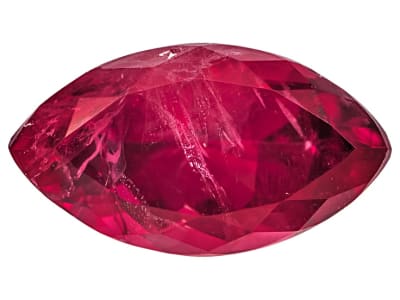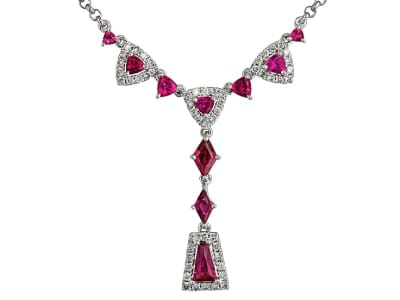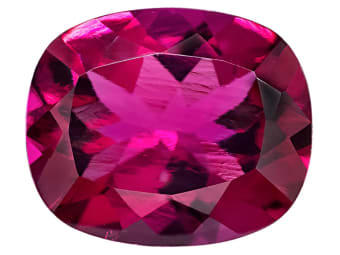Bixbite or red beryl was named after Maynard Bixby who discovered it in 1904. The name red beryl is preferred because the name bixbite is often confused with the mineral bixbyite which was also name after Maynard Bixby. Red beryl was first found in the Thomas Range in Utah. The only commercially viable source of gem quality material is the Ruby Violet Mine in the Wah Wah Mountains of Utah. Red beryl can also be found in other locations in Utah, New Mexico, and Mexico. The red color is thought to be due to trivalent manganese and possibly smaller amounts of iron and chromium. Red beryl crystals do not grow very large so faceted material above 1ct is highly sought after by collectors. Most faceted stones are less than .25ct.
General Information
LWUV: Inert
Bixbite Colors
-
 Red
Red
Alternate Names
Red Beryl; Bayez Bixbite(TM)
Countries of Origin
Russian Federation; Unknown; United States of America; Mexico; Switzerland; India
Care
Bixbite is often oiled or infused with resin to improve clarity. Avoid ultrasonic cleaners, and harsh chemicals.
More About Bixbite
Although bixbite is a relative newcomer to the gem world, those who believe in the metaphysical properties of stones say that it may add harmony to relationships and enhance creativity. There's no scientific evidence that supports those beliefs, but we believe that it can add a harmonious tone to a relationship when given as a gift of love.
Creation Method
Lab Created Hydrothermal
Hydrothermal synthetic red beryl was manufactured by the Institute of Crystallography in Moscow and by its affiliate company Emcom Ltd. The material was first reported in 1965. Loose gemstones for the jewelry market were available by the mid-1990’s. It is thought that hydrothermal synthetic red beryl is no longer produced.
Species/Variety
Bixbite in Rhyolite
Bixbite in rhyolite comes from the Ruby Violet Mine in the Wah Wah Mountains of Utah. About 18 to 20 million years ago a topaz rhyolite was created during the Blawn Formation volcanic eruption. Superheated beryllium-rich water and gases invaded cracks and fractures in the rhyolite to allow formation of the red beryl. The red beryl in this material would be too small to facet but makes attractive cabochons situated in the rhyolite matrix.




